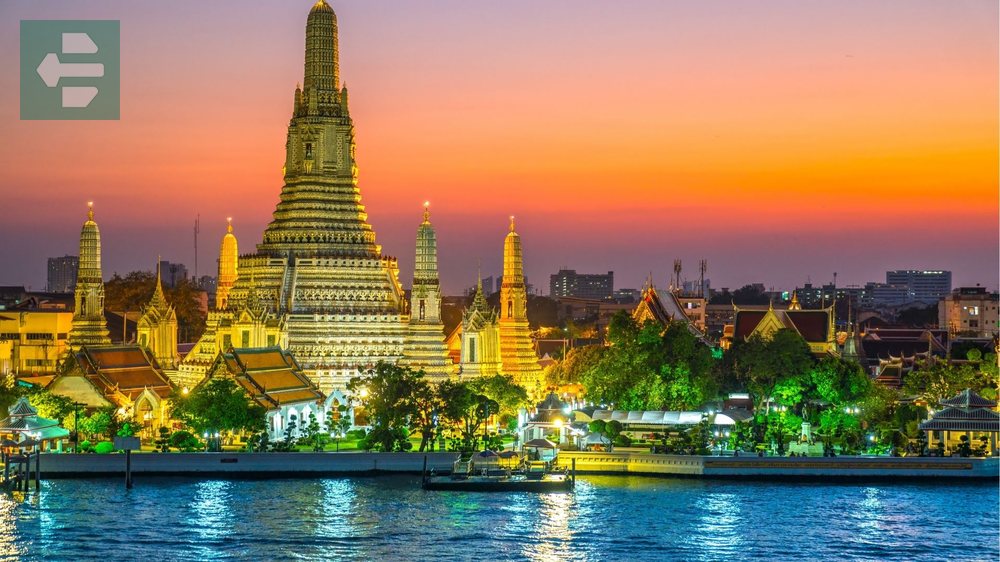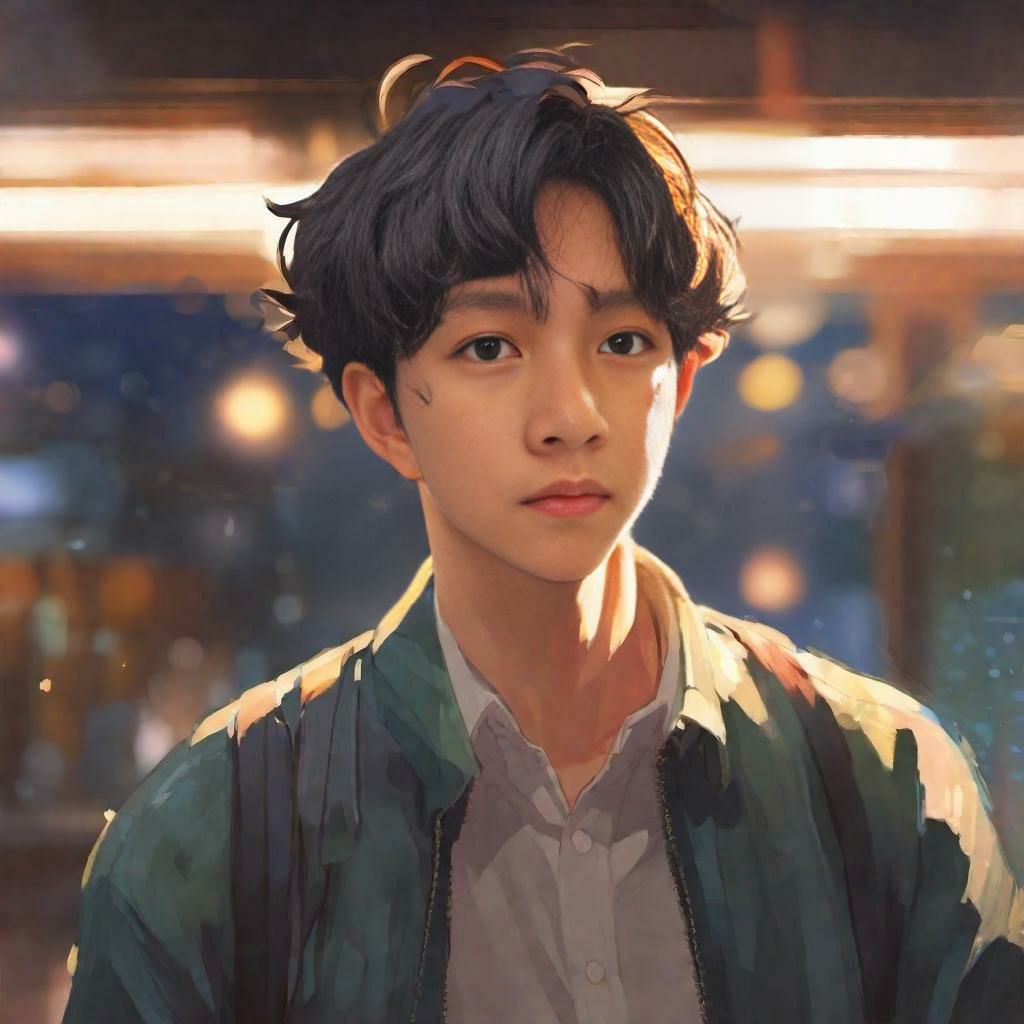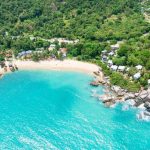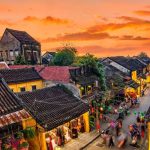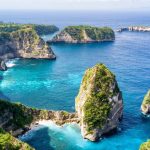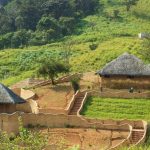Bangkok offers a diverse mix of ancient temples, bustling markets, and cultural treasures that define Thailand's capital. The Grand Palace and Wat Phra Kaew showcase royal splendor, while Wat Arun and Wat Pho reveal spiritual heritage. Chinatown pulses with street food energy, and the Chao Phraya River connects it all.
Keep reading as we explore the best places to visit in Bangkok that will transform your trip into an unforgettable Thai adventure.
List of Contents
- 1. Grand Palace: Six Centuries of Royal Power
- 2. Wat Phra Kaew: The Emerald Buddha's Sacred Home
- 3. Wat Arun: Engineering Meets Art
- 4. Wat Pho: Where Healing Began
- 5. Chinatown: Neon Nights and Golden Days
- 6. Khao San Road: Backpacker Central Evolved
- 7. Chao Phraya River: Bangkok's Liquid Highway
- 8. Dusit Palace: European Dreams in Thai Silk
- 9. Chatuchak Market: 15,000 Stalls of Possibility
- 10. Jim Thompson House: Silk Roads and Mysteries
- 11. Lumpini Park: Bangkok's Green Lung
- 12. Golden Mount: 318 Steps to Serenity
- Bangkok Awaits Your Discovery
1. Grand Palace: Six Centuries of Royal Power
The Grand Palace spans 54 acres of gleaming spires and intricate murals that housed Thai kings for 150 years. Gold leaf covers nearly every surface, creating a visual symphony that shifts with Bangkok's changing light.
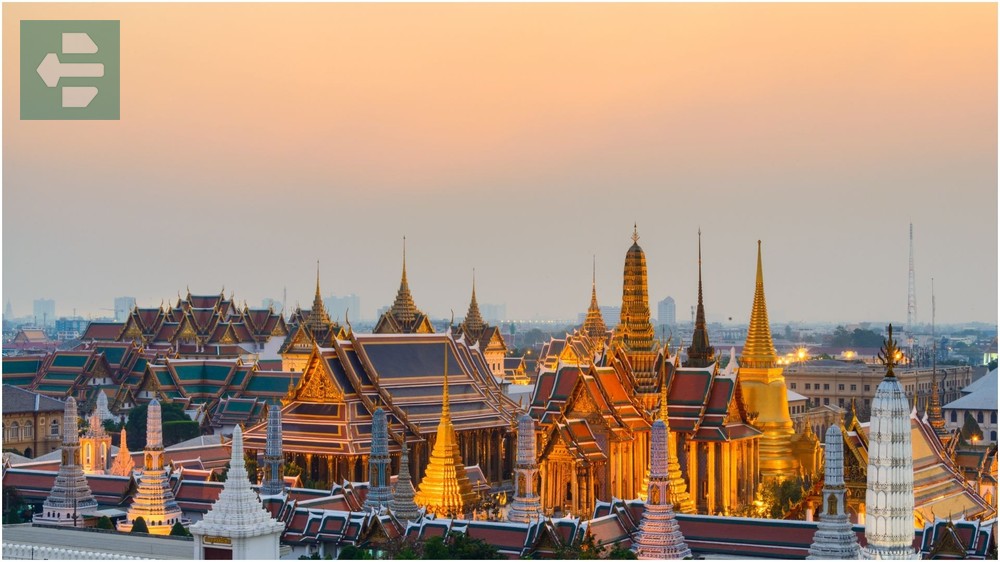
Arrive before 9am to beat the tour groups. The complex closes unexpectedly for royal functions, so check the calendar before your visit. Dress codes are strictly enforced—no shorts, sleeveless tops, or flip-flops allowed.
The Chakri Maha Prasat Hall blends Thai and European architecture in a way that mirrors Bangkok itself—ancient traditions meeting modern influences.
Quick Facts:
- High season: November-February
- How to get there: Taxi, tuk-tuk, or Chao Phraya Express Boat to Tha Chang Pier
- Entrance fee: From 500 baht
- Suggested duration: 2-3 hours
- Key areas: Wat Phra Kaew, Chakri Maha Prasat Hall, Throne Halls
2. Wat Phra Kaew: The Emerald Buddha's Sacred Home
Inside the Grand Palace complex sits Thailand's most sacred temple. The Emerald Buddha—actually carved from jade—measures just 26 inches tall but commands the devotion of an entire nation.
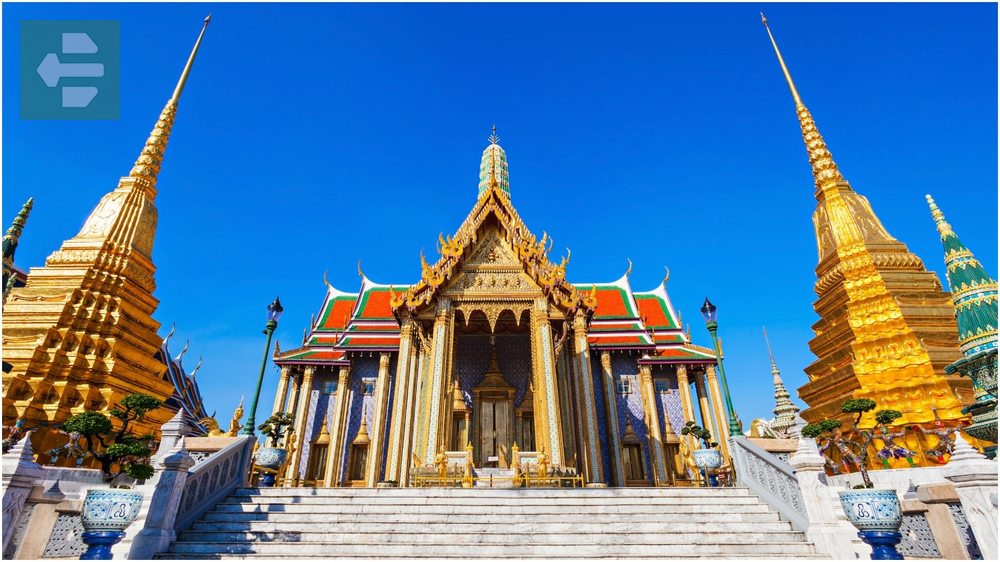
Three times yearly, the King changes the Buddha's seasonal robes in elaborate ceremonies. The ritual connects modern Thailand to centuries of tradition. Photography inside the main hall is forbidden, making this purely an experience for memory.
The temple's walls tell the Ramakien story through detailed murals that took decades to complete.
Quick Facts:
- High season: November-February
- How to get there: Inside Grand Palace complex
- Entrance fee: Included with Grand Palace ticket
- Suggested duration: 1 hour
- Key areas: Emerald Buddha Hall, Ramakien murals, Golden Chedi
3. Wat Arun: Engineering Meets Art
Wat Arun rises 70 meters from the Chao Phraya's western bank, its spires decorated with millions of porcelain pieces that create rainbow patterns in sunlight. The temple earned its name “Temple of Dawn” from its spectacular sunrise views.
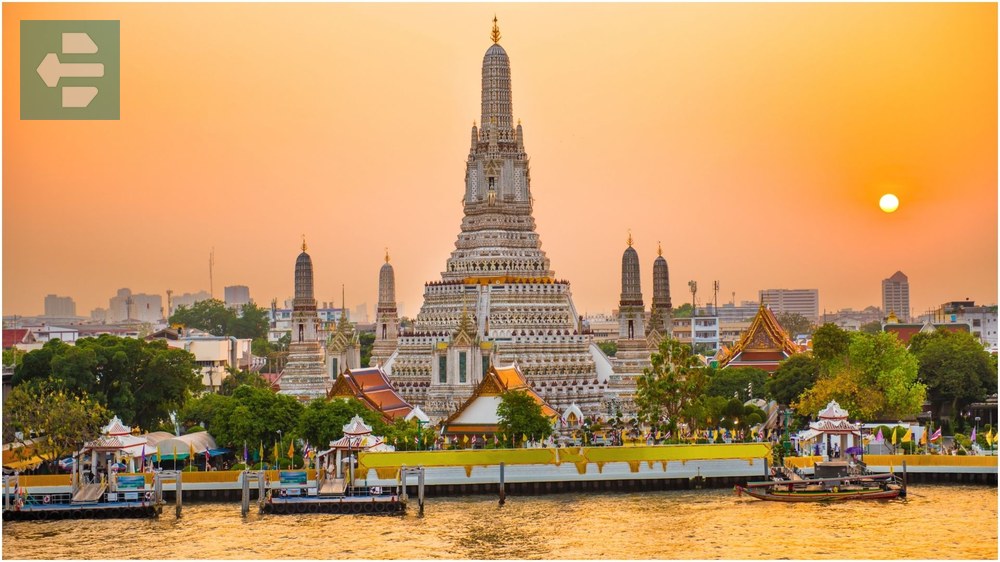
Climbing the central prang requires steady nerves—the steps are steep and narrow. But the view rewards your effort. Bangkok spreads below while longtail boats trace white wakes across the river.
Visit during low tide. High water makes the ferry crossing choppy and the temple's reflection less dramatic.
Quick Facts:
- High season: November-February
- How to get there: Chao Phraya Express Boat to Tha Tien, then cross-river ferry
- Entrance fee: From 200 baht
- Suggested duration: 1-2 hours
- Key areas: Central prang, river viewpoint, porcelain decorations
4. Wat Pho: Where Healing Began
The 46-meter Reclining Buddha fills an entire hall at Bangkok's oldest temple. Gold leaf covers every inch of the statue, while mother-of-pearl inlay decorates the feet with 108 auspicious symbols.
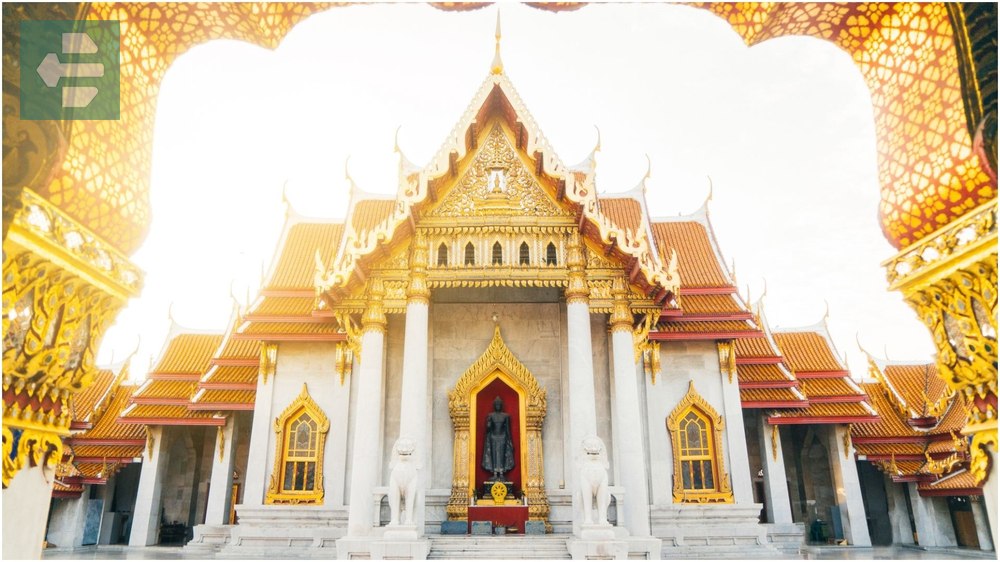
I remember touching the bronze bowls that line the hall's perimeter—each coin dropped brings merit and creates a gentle chiming that echoes ancient prayers. The sound stays with you long after leaving.
Wat Pho houses Thailand's first university and remains the country's premier massage school. A traditional massage here connects you to 1,000 years of healing knowledge.
Quick Facts:
- High season: November-February
- How to get there: Walking distance from Grand Palace, or Chao Phraya Express Boat to Tha Tien
- Entrance fee: From 200 baht
- Suggested duration: 2 hours
- Key areas: Reclining Buddha, massage school, medicine pavilions, chedis
5. Chinatown: Neon Nights and Golden Days
Yaowarat Road transforms after sunset. Neon signs flicker to life above street cooks who grill whole fish over charcoal braziers. The air fills with sizzling sounds and aromatic smoke that draws crowds from across Bangkok.
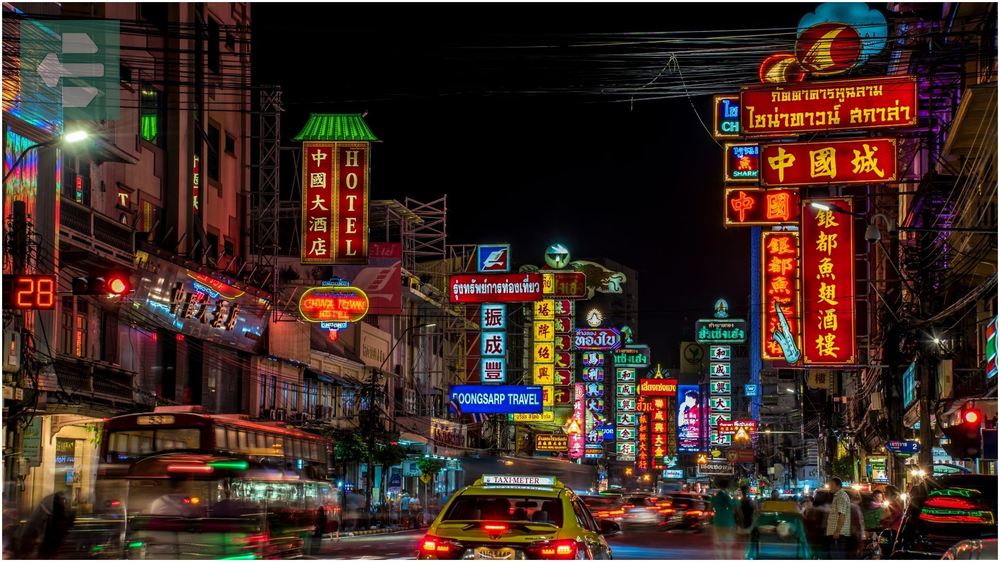
Gold shops line Yaowarat during daylight hours. Their windows display intricate jewelry that catches sunlight like captured fire. Local families have run these businesses for generations, trading in trust as much as precious metal.
Navigate the narrow alleys of Sampeng Lane for bargains that tourists rarely discover. Shopkeepers here speak little English but understand the universal language of negotiation.
Quick Facts:
- High season: Year-round (best after sunset)
- How to get there: MRT to Hua Lamphong, taxi, or Chao Phraya Express Boat
- Entrance fee: Free
- Suggested duration: 2-3 hours
- Key areas: Yaowarat Road, Sampeng Lane, Wat Traimit, Wat Mangkon Kamalawat
6. Khao San Road: Backpacker Central Evolved
Khao San Road earned global fame through “The Beach” but has evolved beyond its backpacker origins. Thai university students now mingle with international travelers, creating an energy that pulses until dawn.

Street vendors sell everything from scorpion skewers to handmade jewelry. Massage parlors offer foot rubs while bars pump music that spills onto sidewalks. The chaos feels overwhelming until you surrender to its rhythm.
During Thai New Year in April, Khao San becomes the epicenter of the world's largest water fight. Book accommodation months ahead if you plan to join Songkran festivities.
Quick Facts:
- High season: November-February (busiest at night)
- How to get there: Taxi, tuk-tuk, or walking from Grand Palace area
- Entrance fee: Free
- Suggested duration: Evening visit recommended
- Key areas: Main Khao San strip, side streets, Rambuttri Village
7. Chao Phraya River: Bangkok's Liquid Highway
The Chao Phraya connects Bangkok's scattered attractions like a liquid subway system. Express boats stop at major temples and markets, offering glimpses of riverside life that cars cannot provide.

Longtail boat tours reveal hidden canals where wooden houses stand on stilts above murky water. Elderly Thai women pole narrow boats loaded with tropical fruits, selling to customers who lower baskets from their porches.
The river never sleeps. Dawn brings commuter ferries packed with office workers. Sunset carries tourist boats toward glittering temple spires. Midnight sees fishing boats heading downstream toward the Gulf of Thailand.
Quick Facts:
- High season: November-April
- How to get there: Multiple piers throughout Bangkok
- Entrance fee: 15-40 baht for express boats
- Suggested duration: Full day pass recommended
- Key areas: Saphan Taksin, Tha Chang, Tha Tien, Wang Thonglang piers
8. Dusit Palace: European Dreams in Thai Silk
King Rama V built Vimanmek Mansion entirely from golden teak without using a single nail. The three-story structure reflects his fascination with European architecture adapted for Thailand's tropical climate.

Walking through the 81 rooms feels like entering a time capsule from 1900. Royal furniture remains exactly as the King left it. Photographs show monarchs posed in Western dress beside traditional Thai artifacts.
The palace grounds contain multiple museums that require separate tickets. Plan a full morning to appreciate the collection's scope without rushing between buildings.
Quick Facts:
- High season: November-February
- How to get there: BTS to Victory Monument, then taxi or bus
- Entrance fee: From 150 baht
- Suggested duration: 3-4 hours
- Key areas: Vimanmek Mansion, Abhisek Dusit Throne Hall, Royal Carriage Museum
9. Chatuchak Market: 15,000 Stalls of Possibility
Chatuchak Weekend Market spreads across 35 acres with enough variety to furnish an entire house. Vintage band t-shirts hang beside hand-carved Buddha statues. Orchid vendors sell exotic blooms while pet shops offer sugar gliders and tropical birds.

The market's official sections mean little in practice. Art appears everywhere—tucked behind food stalls, hidden in side alleys, displayed on sidewalks. Following your nose leads to discoveries that maps cannot predict.
Heat and humidity make afternoon visits challenging. Smart shoppers arrive at opening time with empty stomachs and comfortable shoes.
Quick Facts:
- High season: Weekend operation only
- How to get there: BTS Mo Chit or MRT Chatuchak Park stations
- Entrance fee: Free
- Suggested duration: 4-6 hours
- Key areas: Sections 2-6 (clothing), 7-15 (handicrafts), 24-26 (antiques)
10. Jim Thompson House: Silk Roads and Mysteries
Six traditional Thai houses create a compound that American Jim Thompson assembled in the 1950s. His disappearance in Malaysia's Cameron Highlands remains unsolved, adding intrigue to already fascinating architecture.

The guided tour reveals Thompson's art collection—Khmer sculptures, Chinese porcelain, and Thai paintings acquired during silk-trading travels. Each room tells stories of cultural exchange between East and West.
Thompson's silk company continues operating from the compound. The shop sells scarves and clothing that connect modern Bangkok to ancient weaving traditions.
Quick Facts:
- High season: November-February
- How to get there: BTS National Stadium, short walk through Siam Square
- Entrance fee: From 200 baht adults, 100 baht students
- Suggested duration: 1-2 hours
- Key areas: Traditional houses, silk museum, Thompson's art collection, gardens
11. Lumpini Park: Bangkok's Green Lung
Lumpini Park offers 142 acres of grass, trees, and lakes in central Bangkok. Morning brings tai chi practitioners and joggers who circle the park's 2.5-kilometer path. Evening draws families for picnics and free aerobic classes.

Monitor lizards sun themselves beside the lake, growing bold enough to approach visitors. These prehistoric-looking creatures can reach six feet in length but generally ignore humans unless food appears.
The park hosts classical concerts during cool season months. Bangkok Symphony Orchestra performs under stars while traffic noise fades into distant memory.
Quick Facts:
- High season: Best early morning or evening
- How to get there: MRT Lumpini or Si Lom, BTS Sala Daeng stations
- Entrance fee: Free
- Suggested duration: 1-2 hours
- Key areas: Central lake, outdoor gym, concert pavilion, children's playground
12. Golden Mount: 318 Steps to Serenity
Wat Saket's Golden Mount climbs 58 meters above Bangkok on an artificial hill built from a collapsed 19th-century chedi. The spiral staircase winds past bells, shrines, and small waterfalls that create cooling mist.

At the summit, Bangkok spreads in every direction—a sea of red rooftops punctuated by gleaming temple spires. The view lacks famous landmarks but captures the city's true scale and complexity.
During November's Loy Krathong festival, thousands carry candles up these steps in a procession that transforms the mount into a glowing beacon visible across Bangkok.
Quick Facts:
- High season: November-February
- How to get there: Taxi or tuk-tuk to Wat Saket, walking distance from Khao San Road
- Entrance fee: From 50 baht
- Suggested duration: 1 hour
- Key areas: Golden chedi summit, Buddha statues, city viewpoint, temple grounds
Bangkok Awaits Your Discovery
These twelve destinations represent Bangkok's soul—where ancient spirituality meets modern energy, where street food rivals royal cuisine, where chaos creates its own perfect order.
Pack light clothes and comfortable shoes. Bring patience for crowds and wonder for experiences that guidebooks cannot capture.
The best places to visit in Bangkok offer more than sightseeing. They provide transformation. Each temple teaches patience. Every market rewards curiosity. All rivers carry stories.
Your Bangkok adventure begins the moment you step off the plane. The city will challenge and inspire you in equal measure, leaving you planning your return before you've finished exploring.
